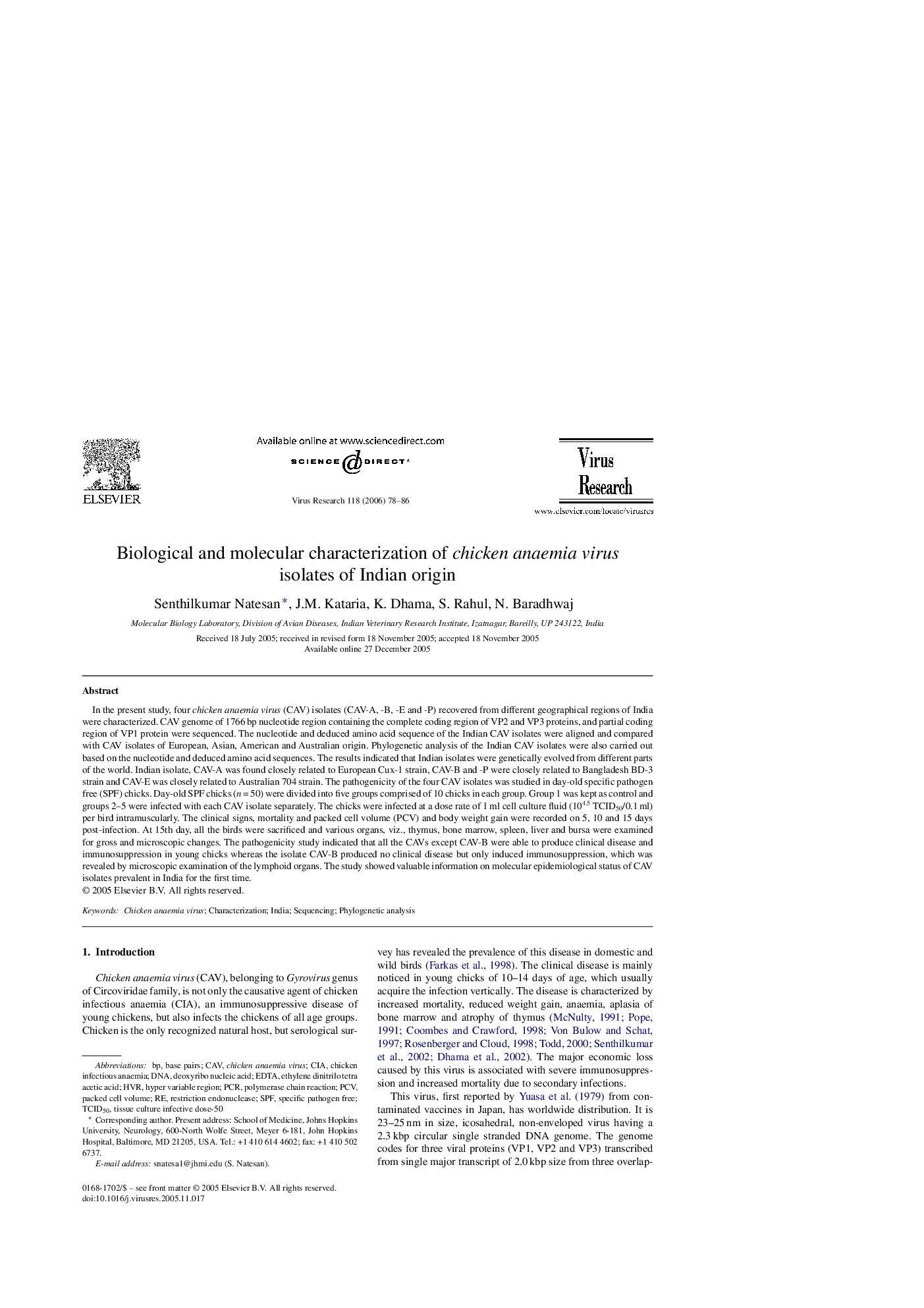| Article ID | Journal | Published Year | Pages | File Type |
|---|---|---|---|---|
| 3431342 | Virus Research | 2006 | 9 Pages |
In the present study, four chicken anaemia virus (CAV) isolates (CAV-A, -B, -E and -P) recovered from different geographical regions of India were characterized. CAV genome of 1766 bp nucleotide region containing the complete coding region of VP2 and VP3 proteins, and partial coding region of VP1 protein were sequenced. The nucleotide and deduced amino acid sequence of the Indian CAV isolates were aligned and compared with CAV isolates of European, Asian, American and Australian origin. Phylogenetic analysis of the Indian CAV isolates were also carried out based on the nucleotide and deduced amino acid sequences. The results indicated that Indian isolates were genetically evolved from different parts of the world. Indian isolate, CAV-A was found closely related to European Cux-1 strain, CAV-B and -P were closely related to Bangladesh BD-3 strain and CAV-E was closely related to Australian 704 strain. The pathogenicity of the four CAV isolates was studied in day-old specific pathogen free (SPF) chicks. Day-old SPF chicks (n = 50) were divided into five groups comprised of 10 chicks in each group. Group 1 was kept as control and groups 2–5 were infected with each CAV isolate separately. The chicks were infected at a dose rate of 1 ml cell culture fluid (104.5 TCID50/0.1 ml) per bird intramuscularly. The clinical signs, mortality and packed cell volume (PCV) and body weight gain were recorded on 5, 10 and 15 days post-infection. At 15th day, all the birds were sacrificed and various organs, viz., thymus, bone marrow, spleen, liver and bursa were examined for gross and microscopic changes. The pathogenicity study indicated that all the CAVs except CAV-B were able to produce clinical disease and immunosuppression in young chicks whereas the isolate CAV-B produced no clinical disease but only induced immunosuppression, which was revealed by microscopic examination of the lymphoid organs. The study showed valuable information on molecular epidemiological status of CAV isolates prevalent in India for the first time.
